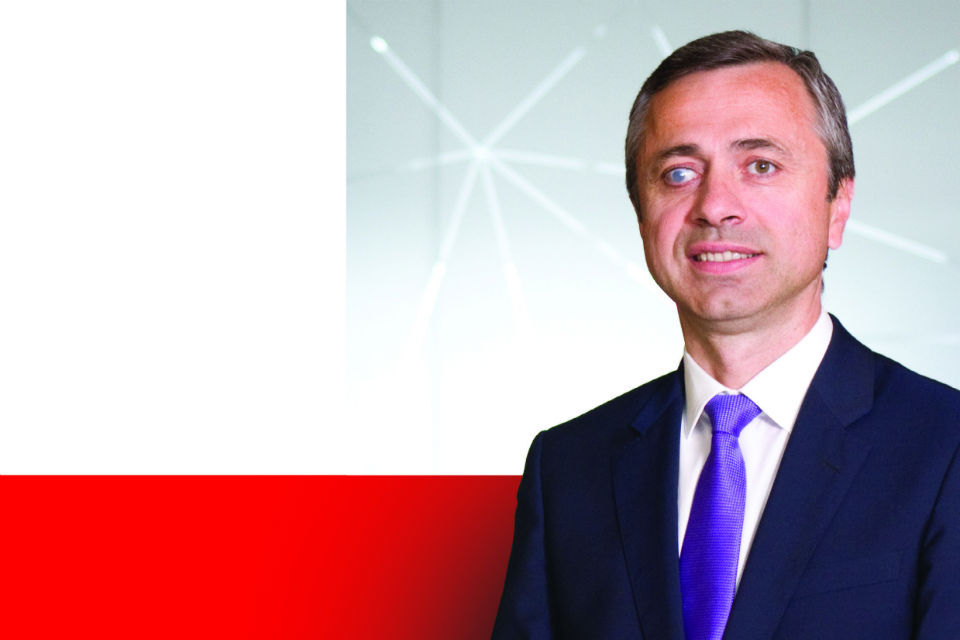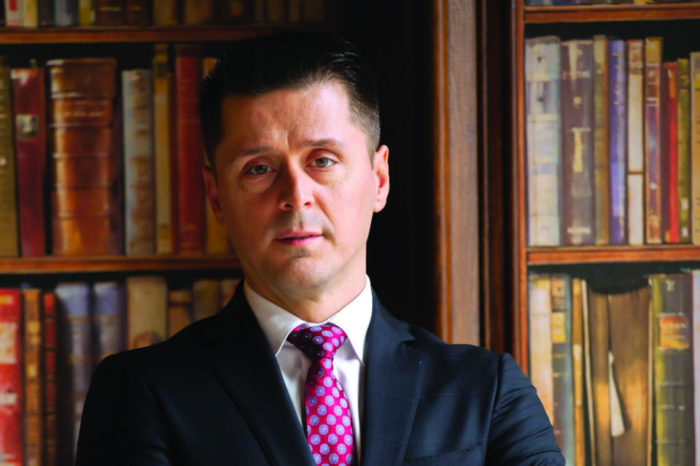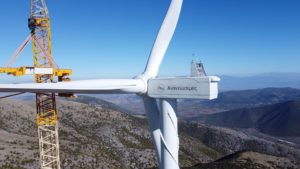AmCham: Capitalizing on yesterday’s wins, preparing for a stronger tomorrow

During AmCham’s over 25-year activity in Romania, the American Chamber of Commerce in Romania has experienced many breakthroughs that really made a difference at the time. In a 15-year perspective, Romania’s accession to the EU remains the most important milestone both for Romania and for the business community.
The Diplomat – Bucharest talked with Ionut Simion, President of Amcham and Country Managing Partner of PwC Romania about the overall perspectives that defined the growth of business community in Romania and the recent developments.
A functional capital market is critical for connecting a national economy to the global economy
In this respect, Ionut Simion refers to Romania’s capital market upgrade to the emerging market status by FTSE Russell. “AmCham welcomed and contributed to this achievement. For members of an organization like AmCham Romania that promotes investments as a strategic pillar for sustainable economic growth, this is excellent news, while for Romania it is the growth opportunity that investors have eagerly expected,” Ionut Simion states.
The Amcham’s president underlines that a functional capital market is critical for connecting a national economy to the global economy amidst a fierce and increasingly complex competition worldwide for financing, and it was an ingredient that was missing from Romania’s investment offer.
Most recently, AmCham’s perspective on Romania’s macroeconomic outlook was outlined in the 2019 edition of the Priorities for Romania document, which places Romania’s economic performance in the context of the regional and global evolutions.
According to this AmCham vision document, Romania’s level of economic development which remains low suggests that the high potential for long-term economic growth of approximately 3.5 – 4% per year continues to be there. It is important to understand that once Romania became a mid-level income country (with a GDP/capita above USD 10,000) it can no longer aim for 5-6 % annual growth rates like emerging economies.
“Within the context of deepening external and internal constraints, however, we deem that capitalizing on this high potential for economic growth can only happen by implementing a coherent strategy for Romania’s long-term economic development,” Ionut Simon says. In view of a sustainable economic growth and a process of true convergence, the long-term economic development strategy should consider key aspects such as: investments in infrastructure, sustaining capital investments and technological progress, a better integration of the Romanian economy into the global added-value chains and implementing cautious macroeconomic policies.
According to the manager, for 2020, given the high amount of investments needed in the economy, an increase of the internal funding sources for such investments can only be achieved by diminishing consumption spending and increasing savings. The state must limit the increase of current public spending, especially after the steep increase of such spending (2015-2019), directing more public allocations to investments that generate value in the economy at large, reduce discrepancies compared to the EU average and increase Romania’s competitiveness.
Drivers for growth and challenges
In the context of the AmCham Business Barometer Survey released in June 2019, members reported increased revenues, investments and number of employees for 2018 and expect a similar trend for 2019, with a more prudent forecast regarding investments growth, accordinb to Amcham data. In terms of drivers for growth, member’s responses point out the potential of economy. Digital infrastructure, the quality of the human capital and the corporate tax regime are considered the most attractive Romanian market conditions.
At the opposite end, the quality of the physical infrastructure, the lack of investments policies and programs and macroeconimic instability are the least appreciated market conditions by AmCham members. To address such challenges and improve the Romanian investment climate, AmCham members recommend revising the public spending structure and channeling more budgetary allocations towards investments, especially in physical infrastructure and increasing EU Funds absorption.
The need for predictability
As stated by the Amcham’s president, while the fiscal policy has always been central to the business community agenda, during the past years, it become even more important due to the frequent changes and many initiatives that even though were only announced and not implemented created confusion.
“In this context it comes as no surprise that the strongest request of the business community regarding the fiscal policy is ensuring the predictability, stability and transparency. Equally important for the business community is the digitalization and modernization of the fiscal administration, to increase the collection of the budgetary revenues, to curb fiscal evasion and to ease the interaction between the tax authority and taxpayers,” Ionut Simon says and continues: “That is why we have an issue with VAT collection which is the biggest among EU states, for example. Unfortunately, the Revenue Administration Modernization Project with World Bank was dropped at the beginning of this year. To understand the importance of such a project I mention that it would contribute to a real improvement in tax collection as it happened in Bulgaria. For example, a performance similar with Bulgaria’s would improve state budget revenues with about of the equivalent of Romania’s current annual budget deficit.”
Also, a strategy for stimulating investments generating high added value in the economy is among AmCham’s recommendations, especially as Governments that understand the opportunities and challenges of the digital economy are adapting their fiscal legislation to attract new, innovative business models. If Romania fails to build its relevance for technology and R&D based businesses, it will be faced with a drastic decrease of the tax collection compared with other states, once new EU regulation in this area will be enforced.
AmCham recommendations in the Priorities for Romania document
The AmCham recommendations in the Priorities for Romania document identify a set of cross-cutting issues and actions that must be implemented successfully in order to achieve economic growth that further leads to a developed society. The limitations would be failing to address such areas in a proper, sustainable manner.
In AmCham’s view, the selection, without being exhaustive, includes:
Strengthening the state of law and the rule of law: a democratic Romania can only develop by calibrating and continuously strengthening a modern state based on the rule of law, which relies on an integrated, balanced, high-performing institutional system, through substantive structural reforms that have long-term impact.
Development of physical and social infrastructures: Increasing investments in the infrastructure will increase work productivity in the economy overall and lowering transport costs and time will improve the competitiveness of exporting businesses. Investments in the IT infrastructure and the digitalization of the public system will improve the efficiency of collecting public revenues.
Modernizing the administrative capacity and implementing priority projects for development: Digitalization lowers the operating costs of the public administration and improves the allocation of public financial resources in the economy. The effects of the digitalization of public services are also felt by citizens (users/beneficiaries) and civil servants, and the frequency and quality of the citizen-civil servant interaction improves as well. Another effect is fewer administrative obstacles in the process of setting up and operating a business, which would result in a friendlier business environment (as it would stimulate private initiatives and investments).
Sustainable financing of the economy and attracting capital flows: Supporting direct foreign investments by promoting a friendly business environment increases the capital stocks and promotes technological progress. Direct foreign investments can be used as an instrument to integrate less developed economic regions of the country into the global economic circuit. Improving the absorption of European funds and reducing bureaucracy in the process of accessing such funds and continue to develop the Romanian capital market to become a source of capital for Romanian entrepreneurs.
Human capital within the context of demographic development, increased performance of the education and healthcare systems: Human capital becomes essential in a knowledge-based economy, where the skills that are relevant for production processes tend to become obsolete at an ever-faster pace.
Development of a digital society: Given the intensive technological development of the past few years, one key aspect is to bring the legal framework in line with the development of an integrated digital society, by balancing the availability of information, new technologies and cyber-security with protection of the data of citizens and businesses.
Sustainable development and protection of natural assets: Romania enjoys optimal conditions that it could try to use to secure a competitive advantage for itself, if such assets are used and managed sustainably and with maximum efficiency, as a viable source for creating national wealth.
“Despite the challenges and the hurdles of the past 30 years, Romania is better today than yesterday and will certainly be much better in three years than it is today. If we look at the widely accepted standard of well-being, GDP per capita, we must admit that from 1990 to 2018, we made a huge leap. The indicator is more than 7.4 times higher in 2018 than in 1990,” Ionut Simion, Amcham’s president concludes.
(From the print edition)














